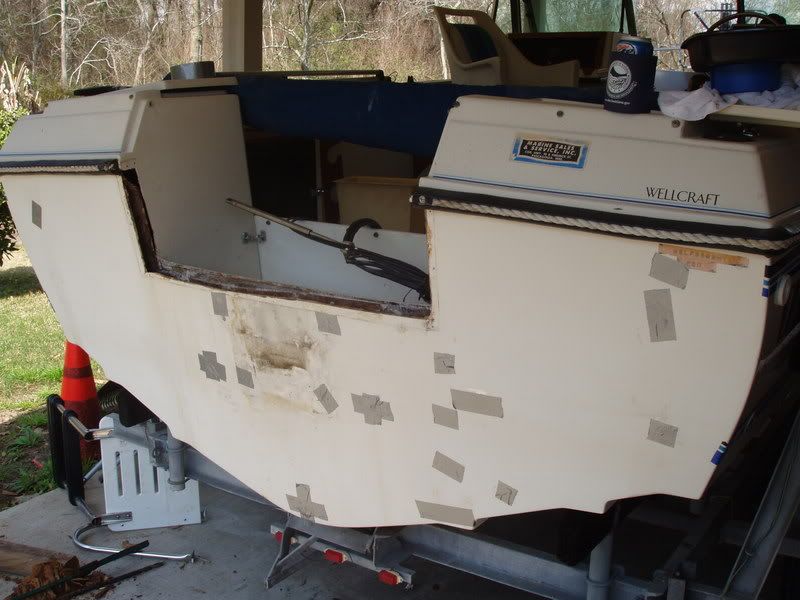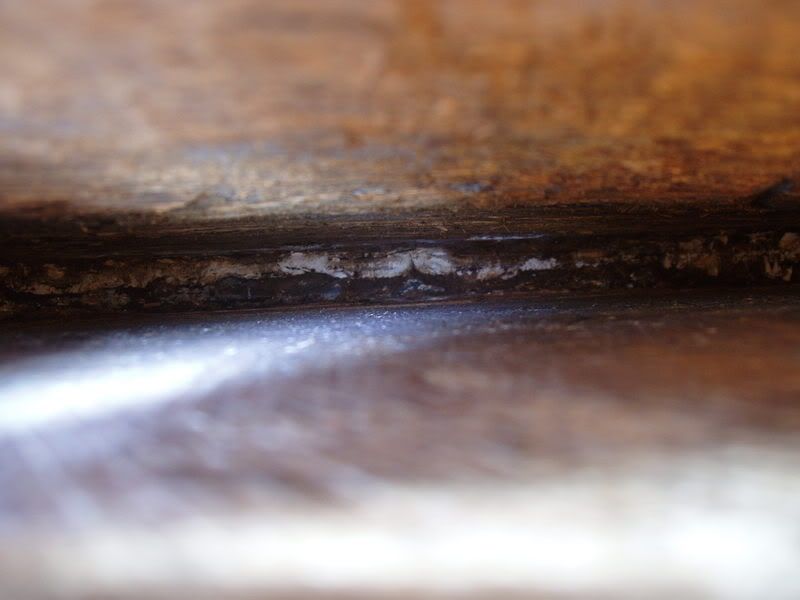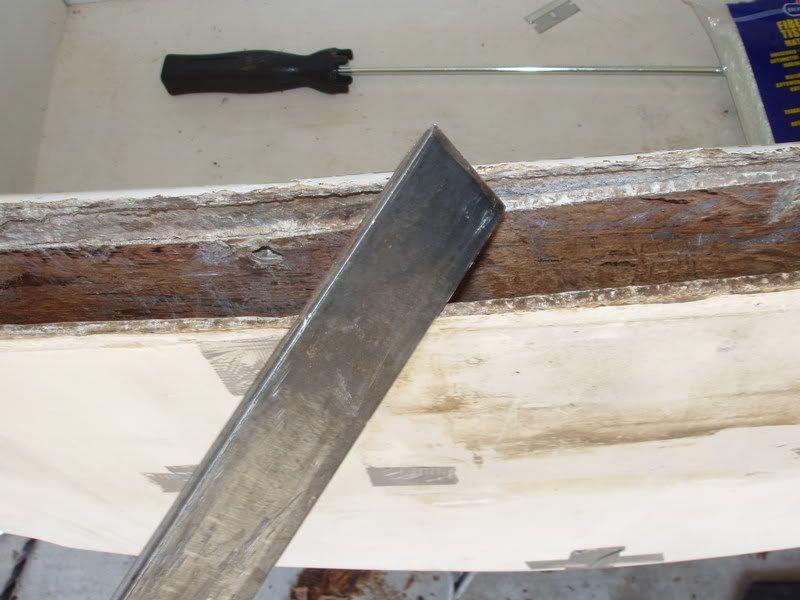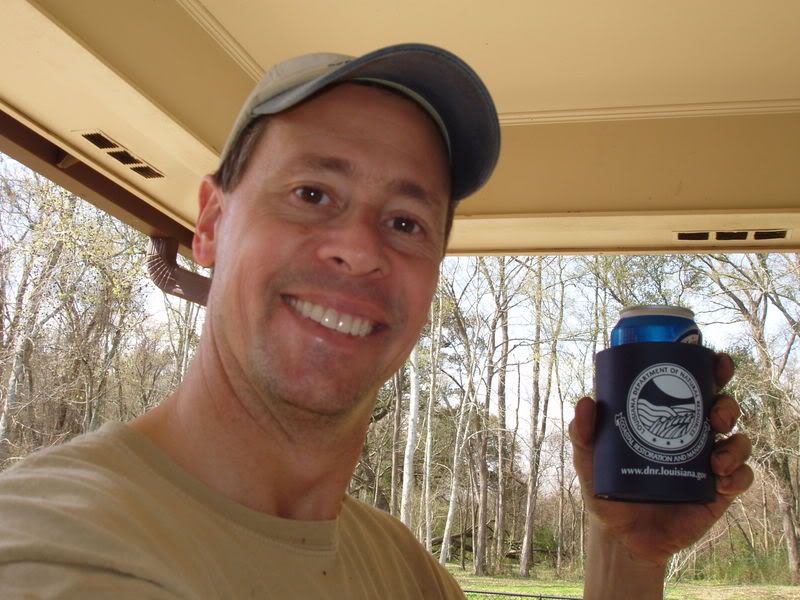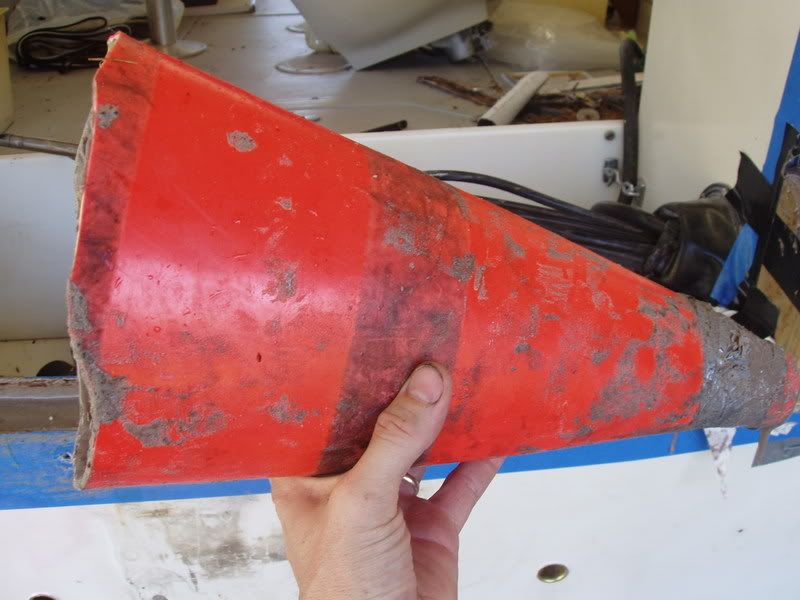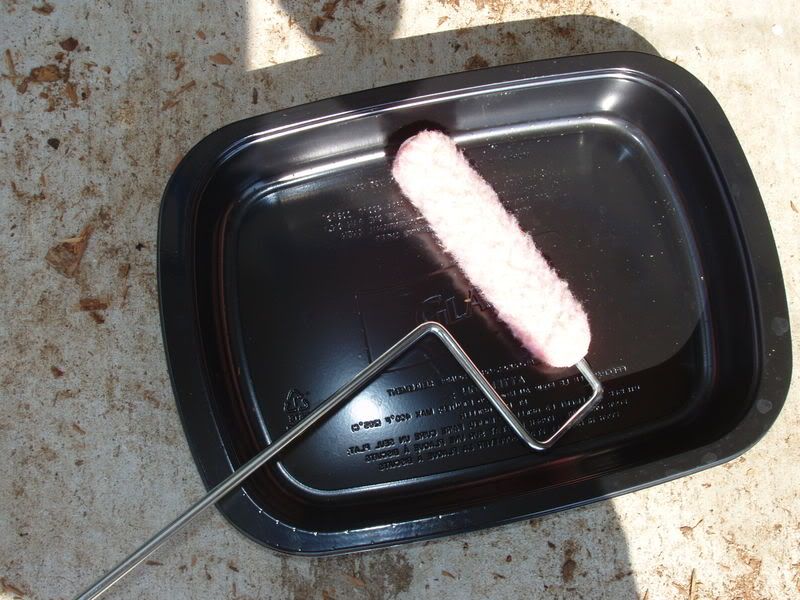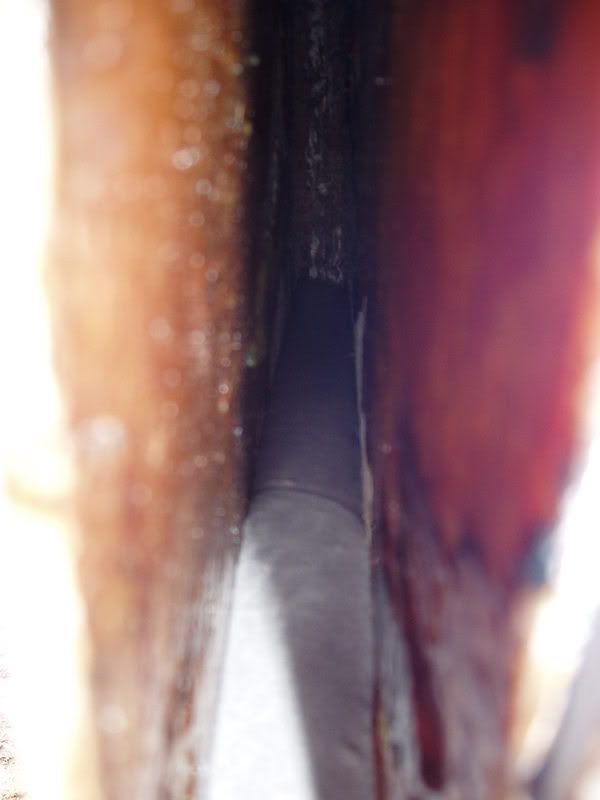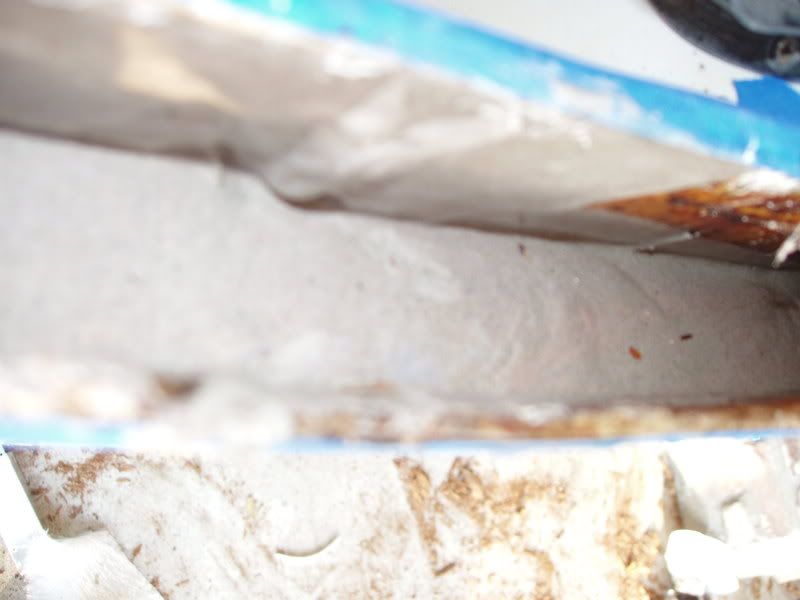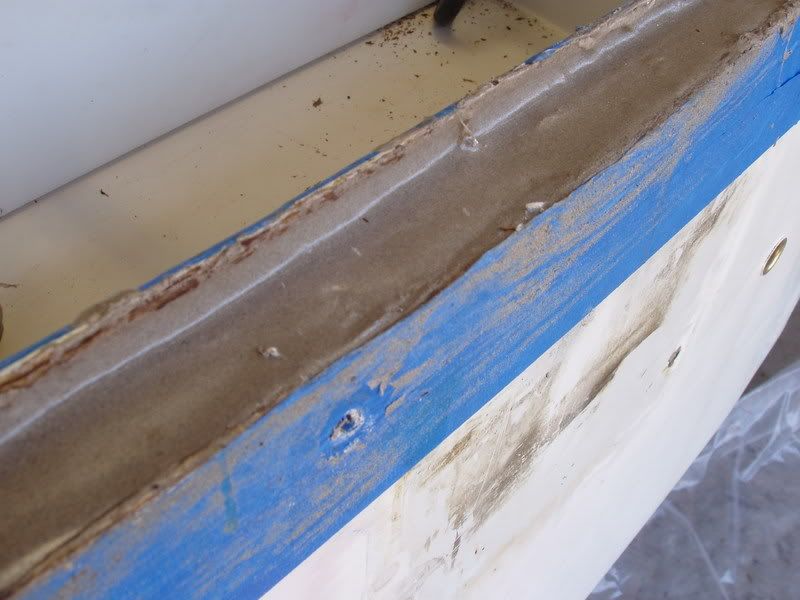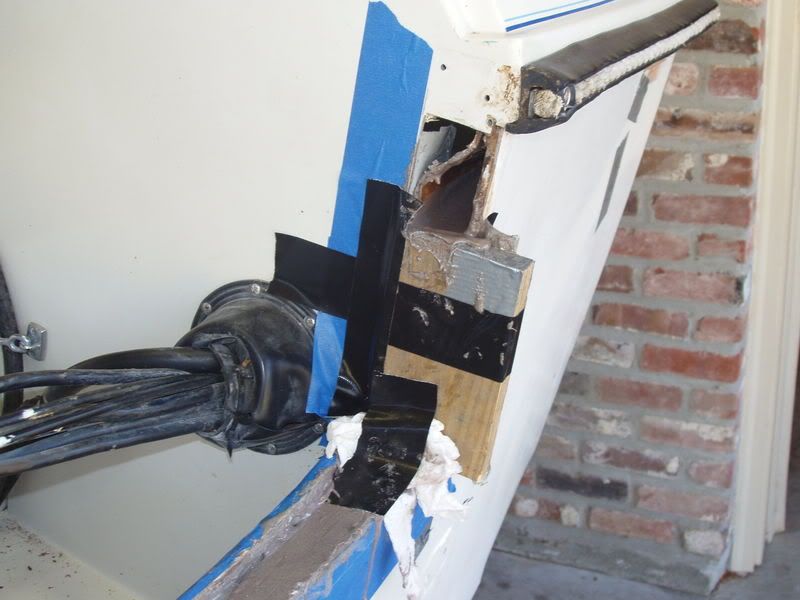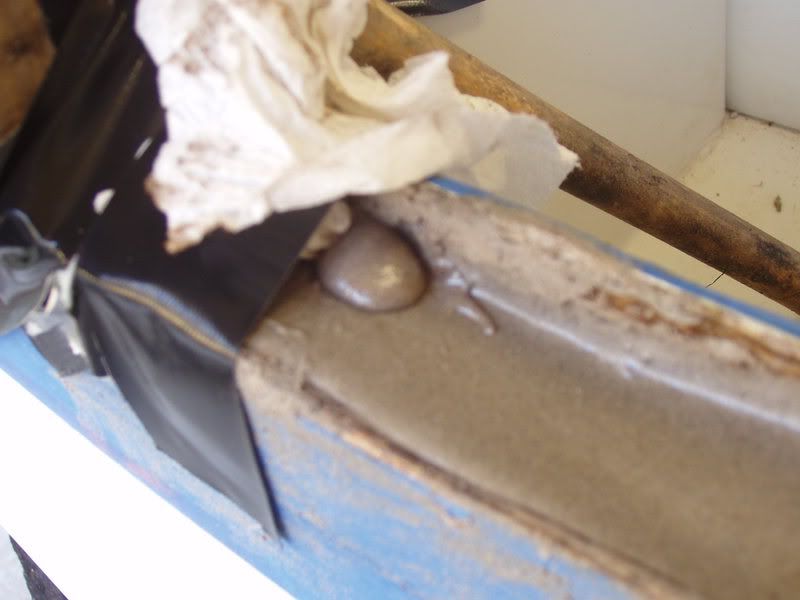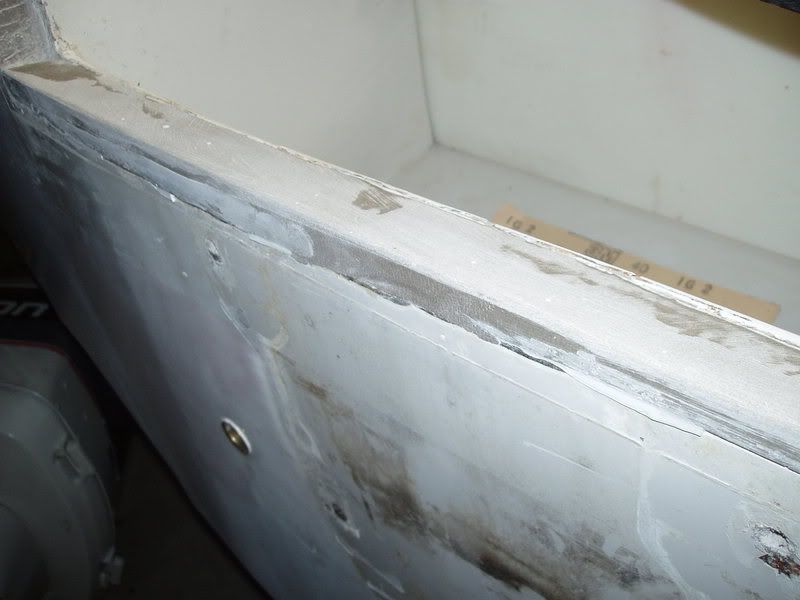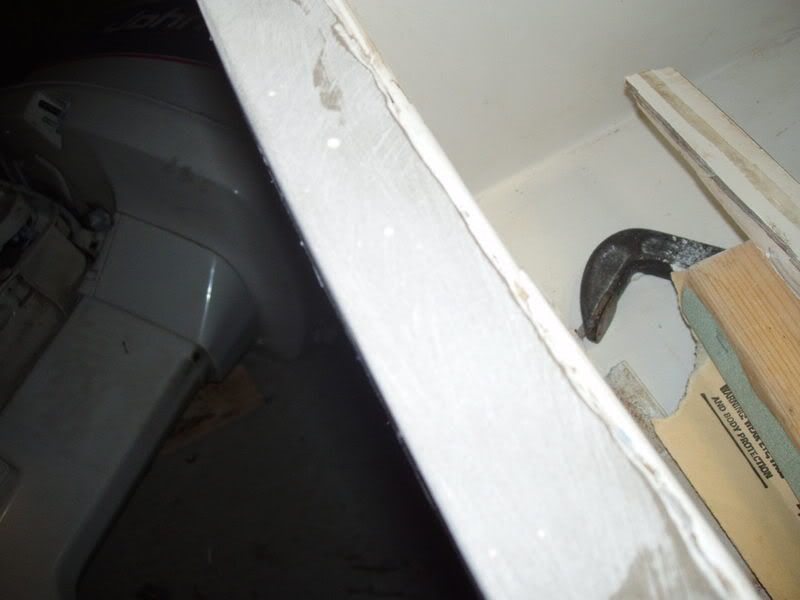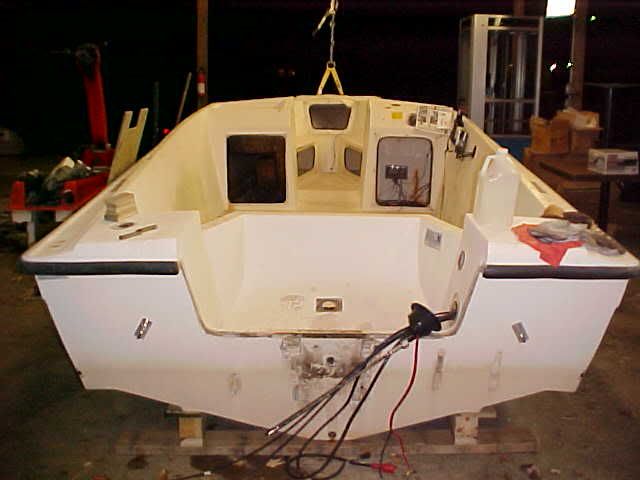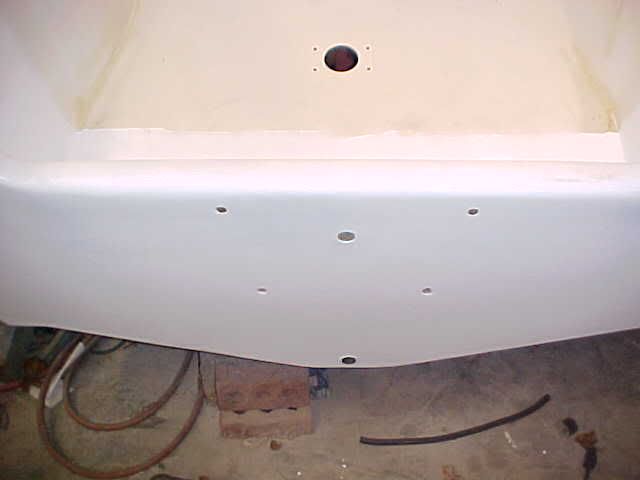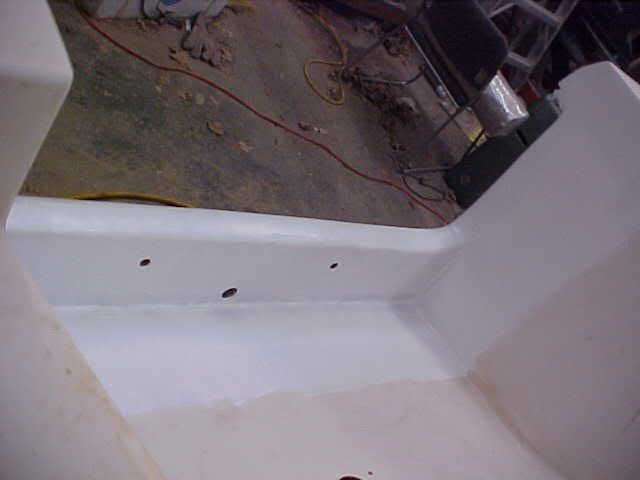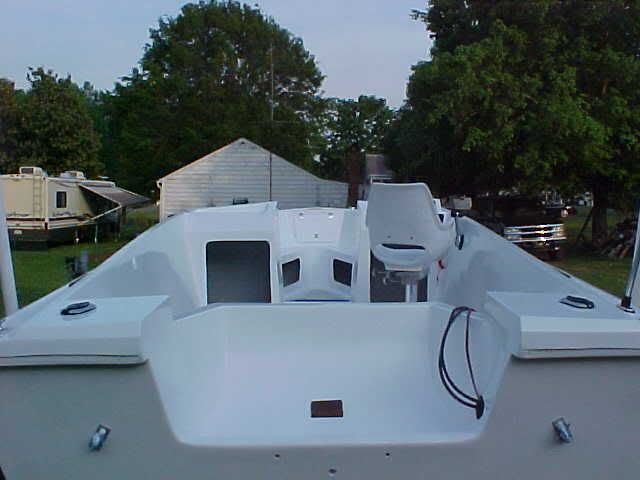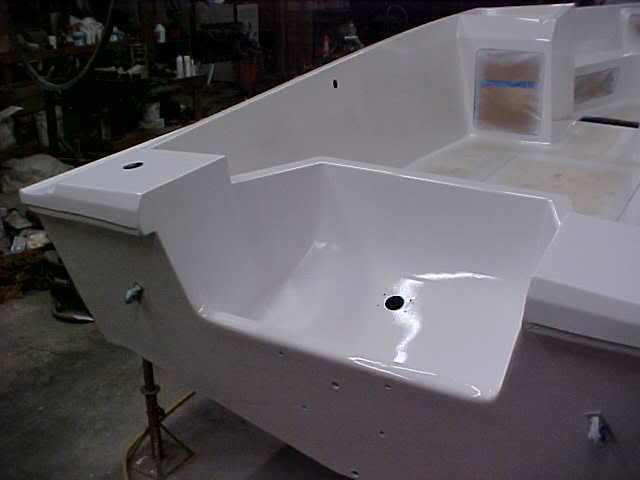Here we go with more pics.
Here she is all taped up. Important note, don't use cheap painters tape. It doesn't work well. Make sure EVERY hole is closed. There was one at a seam on the inner liner that I could not have known about unless I had filled her up with water.
The inside, not quite finished.
Another inside view. She looks pretty clean. I sanded as much as I could. I found that using the long drill bit as a sander worked well. It scrapped the sides pretty clean.
Here is my metal bar scraper. Can you say physical labor?? I was pretty sore after a few hours with this.
Another ready to pour shot.
Time for a break and a beer prior to the final steps. Yes, that's a self portrait.
No actual shots of the actual pour as it was a two person job. Here's my traffic cone fullel.
I coated the interior really well with resin before I poured the transom compound. Here is the small roller I used.
The first pour. The stuff really self levels. This is looking toward the side (starboard?)
More pour
Here's the high tech engineering to block up the sides. Use good tape as this stuff leaks through even the smallest hole.
See what I mean
The finished side. Wrinkles are from the duct tape that was covering the wood block. The space is there because the void tapered down toward the outside of hte boat. The transom compound was at the top of the void on the outter edges of the transom. I guess I can pack it with resin and cloth, but why bother? Nothing screws into that section and its only about two inches out of the entire transom height. I doubt it provides little, if any support.
Finished with a little sanding. I added a small lift on the top just so my transom cap would have a shelf to sit on. The original transom had some really uneven, thick bondo type filler on top. One side of the transom had about 1/4 inch of filler and the other side had about 2". Did they cut the wood that crooked at the factory?
The stuff is as hard as concrete.
More to come. Comments anyone?

